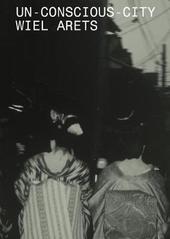
|
Un-Conscious-City
Paperback / softback
Main Details
| Title |
Un-Conscious-City
|
| Authors and Contributors |
By (author) Wiel Arets
|
|
Edited by John Bezold
|
| Physical Properties |
| Format:Paperback / softback | | Pages:256 | | Dimensions(mm): Height 240,Width 165 |
|
| Category/Genre | Architecture |
|---|
| ISBN/Barcode |
9781945150654
|
| Classifications | Dewey:720.92 |
|---|
| Audience | |
|---|
| Edition |
English ed.
|
|
Publishing Details |
| Publisher |
Actar Publishers
|
| Imprint |
Actar Publishers
|
| Publication Date |
22 April 2019 |
| Publication Country |
United States
|
Description
No one tells people to move to cities; people do so on their own. Unconscious City: Conversations with Wiel Arets, explores the unconscious decisions the world's citizens have collectively taken throughout the last few centuries, which are currently and invisibly, reshaping the sensory, physical, and emotional experiences of human beings, when navigating the world's metropolises. Today, it's often that people must move to other cities, whereas in the past, such choices were made consciously, as they were based on rules, or tradition. Then, people belonged to a certain religion, society, or family-which defined their existence. In 1965 Jean-Luc Godard's film Alphaville, showed to the world that the new human being would-one day soon-live in a new, nomadic condition. That day has arrived; tomorrow, the situation will be amplified to unknown heights. This book speculates upon what may soon happen to the world's metropolises, and how the human condition might change, as a result. Today, we navigate by flying between continents; each continent contains a treasure trove of unique neighborhoods-cities. We should no longer speak about cities of the past, and instead discuss the world becoming one cosmopolis: The Unconscious City.
Author Biography
Wiel Arets is a renowned international architect and former Dean at the Illinois Institute of Technology College of Architecture.
Reviews""Un-Conscious-City" raises questions, predicaments, and ideals regarding the future of our cities, while recognizing their limitations which Aret identifies this condition as the Un-Conscious-City. Critique: Enhanced throughout will illustrations, "Un-Conscious-City" is an extraordinary and occasionally iconoclastic study that will prove to be of especial interest to urban planners, architects, governmental policy makers, demographers, and sociologists. Thoughtful and thought-provoking, "Un-Conscious-City" is unreservedly recommended for community, college, and university collections." --Midwest Book Review
|